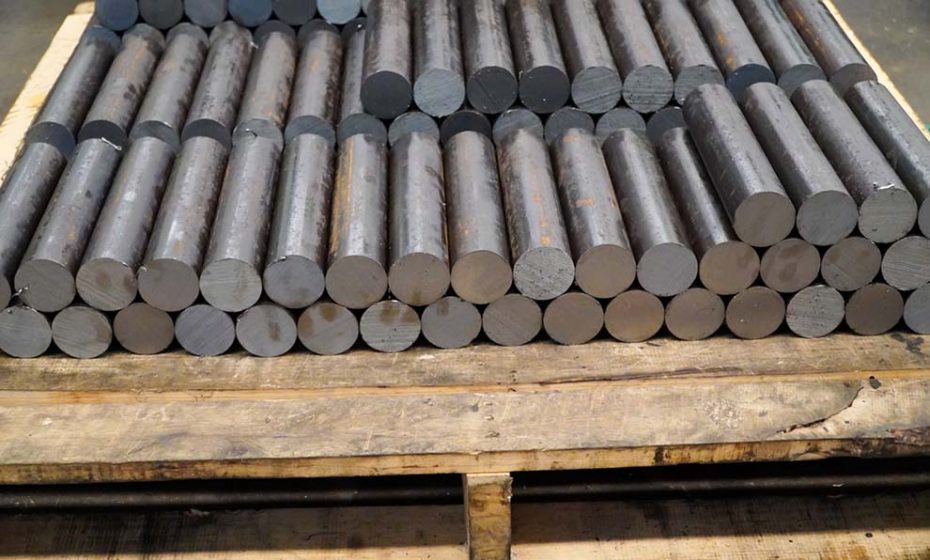
Source: Studio Dagdagaz/Shutterstock.com
If you’re looking to wrap a pallet when shipping steel, you’ve come to the right place. Most people don’t realize steel fabrication is behind around 50 percent of the products we use on any given day, from cell phones to cars and the knives in our kitchens.
Whether you’re shipping raw steel, supplies or completed products, there are several things you should know before you get started. Steel tends to weigh more than virtually any type of product or material on the market, which will certainly add to your shipping costs.
However, many companies and manufacturers will make the mistake of shipping their products using subpar equipment. It’s always best to match the integrity of shipping materials to the integrity of your goods. Otherwise, you run the risk of putting your products at risk. Use this guide to get started:
Start with a Pallet
Before you start wrapping, double-check you’re using the right type of pallet. Steel weighs a ton–literally. If you put your products on a wooden pallet, you could damage your shipping materials. Wood pallets warp when exposed to moisture or extreme temperatures. They also spread debris, which increases the chances of slips and falls.
That’s why we recommend using a metal or plastic 48” x 40” pallet for more peace of mind. This is the standard size for most pallets, but you can find pallets with other dimensions based on the size of your products.

Source: Rito Succeed/Shutterstock.com
Plastic and metal pallets are much more durable than those made of wood. They can usually hold up to 4,600 pounds, which should be enough for your products. Calculate the weight of your shipment before loading onto the pallet just to be safe. You may want to use a metal pallet to increase the weight capacity.
Avoid using skid plates when handling steel. Learn more about the differences between skid vs. pallets.
In Need of a 40” x 48” Pallet? Shop with Us for All Your Pallet Needs
Choose a Container
Find a container that can withstand the force of your steel products. It’s usually best to use a steel or metal container when shipping steel products. They are made of similar materials to keep your products safe across the long distances. Plastic bulk containers can also be a good choice. They won’t rust or warp if you leave them out in the rain.
Pack your steel into the container as tightly as possible to keep everything in place during transit. For raw, exposed steel, use ratchet straps and tension bands to secure the steel together before putting it on the pallet. Put the heaviest items on the bottom of the container.
Choose a size that fits with the exact size of your products for a perfect fit every time.
Use a pallet racking system that works with your pallets for stability and control. You should be able to set the pallet down without damaging the contents or endangering the products underneath. The rack needs to be strong enough to support your steel products. Find reinforced pallet racking for sale to reduce the chances of accidents.
Keep Everything Organized with a Pallet Racking for Sale
How to Wrap a Pallet for Steel Products
Once you’ve chosen a container, it’s time to put it on the pallet. Use ratchet straps to attach the load to the pallet by running the straps under the top boards of the pallet and over the top of the load. Use the tension rods to ratchet up the pressure until the load is tight and secure. Using steel and plastic containers helps you ratchet up the tension as much as possible so nothing can move out of place.

Source: Peter Vanco/Shutterstock.com
To wrap the pallet, start by unrolling a few feet of plastic without ripping it off. You should use one continuous piece of plastic for each load. Crumple the last eight inches into a rope and tie it to the corner of the pallet by wrapping it around one of the columns.
Next, start wrapping the base of the pallet using the unrolled plastic. Slowly work your way up to the top of the load. The plastic should stick to itself for a secure, smooth surface. You should wrap the base and body of the load several times over. Keep the plastic taut and straight during the unrolling process to cover as much of your inventory as possible.
Take a moment to double-check your work. Your inventory shouldn’t move once the plastic has been applied. If you don’t want to wrap all your products, consider putting them in a bulk container instead.
Use these tips to keep your steel safe on the road.
